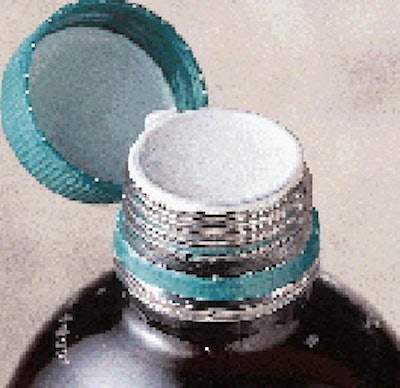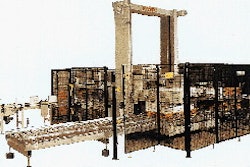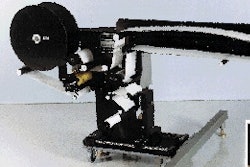
Joining Still Tango in the aseptically filled PET category is Toronto-based McCain Foods Co. through its McCain Sunnyland Div. in Tourneau, Belgium. Its field test of 1.5-L Colorado brand iced teas began in limited regions of France last May. The test represents the first commercial application of Tetra Pak's (Geneva, Switzerland) aseptic PET packaging system.
If the test is deemed a success, the aseptically filled bottle would replace a 1.5-L heat-set PET bottle currently hot-filled by McCain. According to McCain's Elian Mioc, a key attraction of the aseptic package is that it's 6 g lighter and, thus, cheaper. "We think the bottle will cost ten to fifteen percent less than the hot-fill bottle," says Mioc. The savings would let McCain lower the cost to the consumer or improve margins for retailers-or maybe a little of both, says Mioc. But until the test is complete, it's difficult to say. Adds Mioc, "We're still gathering information from the trade and the consumer."
Tetra Pak describes its system as "breakthrough" technology because it offers beverage marketers an all-in-one system: bottle blow molding, bottle sterilizing, filling and capping. Moreover, its footprint is just 8 x 3 m (26' x 10') and it's capable of filling 5ꯠ bottles/hr. It consists of:
*a Tetra Pak Dynablow DBX 6
stretch/blow-molding machine,
* the prototype aseptic filler,
* bottle conveying equipment and
* an inner seal applicator.
Ahead of the aseptic filling system is a Tetra Therm Aseptic processing module, and following it is a capper that applies a polypropylene overcap with a TE breakaway band. According to Tetra Pak's Brian May, bottles are sterilized via hydrogen peroxide. The inner seal, he adds, is made of foil/ plastic and is induction-sealed in place.
An additional advantage McCain should gain by packaging aseptically is better taste because aseptic processing and filling reduces the time during which the tea is exposed to heat. Mioc also says the appearance of the bottle's label is improved because no stress panels are required in the sidewalls. Hot-filled PET bottles require the structural panels to resist collapse upon cooling.
Aseptic filling of PET is not the only new technology to emerge recently from the Tetra Pak Plastic Packaging Division. Its Tetra Max form/fill/seal packaging program was tested last year by MD Foods, a dairy in Newcastle, England (see Packaging World, April '96, p. 2). The 2-L Tetra Max bottle was made of a filled polypropylene supplied by a Tetra subsidiary in the Netherlands called Filltech. An alternative to bottles extrusion blown of high-density polyethylene, it was considered "greener" than HDPE because it consumed less energy and lower quantities of fossil fuels. But recently MD Foods ceased its Tetra Max field test and Tetra closed the program down.
"The significant development and commercialization costs of bringing a completely new packaging system to the market require that any new system must have broad-based consumer and customer acceptance," said a Tetra spokesman in announcing the decision. "The field tests and consumer research conducted over the past year indicate that Tetra Max is more of a niche packaging system."
























